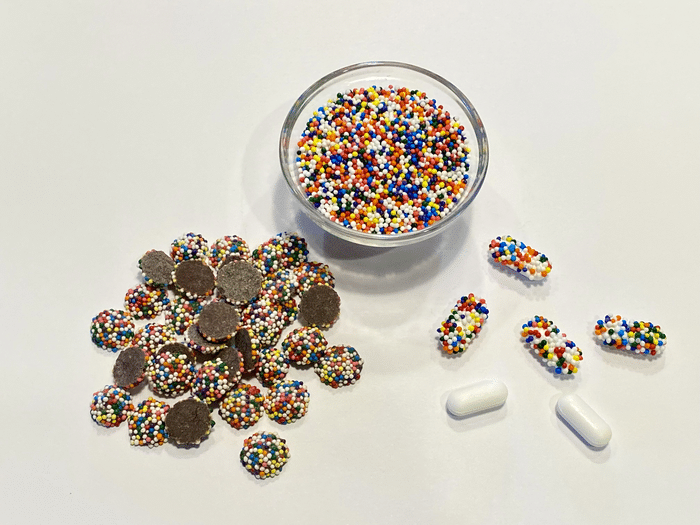Substandard and counterfeit medication not only harms millions of people each year they also cost an astounding estimate of $200 billion annually. W.H.O also estimates that in the developing world 1 in 10 medical products are counterfeit/fake.
In previous work, Grover has tried to develop simple and low-cost methods to ensure the authenticity of pharmaceuticals. In the past, other researchers have also been interested in putting a type of coding onto pharmaceuticals that could be used to verify authenticity, but to date, those ideas have had practical limitations.
“The inspiration for this came from the little colorful chocolate candies. Each candy has an average of 92 nonpareils attached randomly, and the nonpareils have eight different colors. I started wondering how many different patterns of colored nonpareils were possible on these candies,” Grover explains. “It turns out that the odds of a randomly generated candy pattern ever repeating itself are basically zero, so each of these candies is unique and will never be duplicated by chance.”
These odds inspired the idea that nonpareils could be applied as a coating providing each pill a unique pattern to be stored by the manufacturer in a database that consumers could upload an image of using a smartphone to check if the CandyCode matches to check for the possibility of counterfeit products.
To put this idea to the test edible cake decorating glue was used to coat Tylenol capsules with nonpareils, and an algorithm was developed to convert a photo of a CandyCode pill into a set of text strings that would be suitable for storing in a computer database to be used by consumer inquiries. This algorithm was used to analyze a set of CandyCode images that Grover found to function as universally unique identifiers even after subjecting the CandyCode pills to physical abuse to simulate the wear and tear of shipping.
“Using a computer simulation of even larger CandyCode libraries, I found that a company could produce 10^17 CandyCoded pills—enough for 41 million pills for each person on earth—and still be able to uniquely identify each CandyCoded pill,” Grover said.
In the future, more unique CandyCodes could even be created with more colors, sizes, and shapes of candy nonpareils which could also be used to authenticate other products that are often counterfeited. Perfume and wine could have bottle caps coated with nonpareils, and handbags or garments could have tags coated with a type of glitter, as possibilities.
On the unexpected findings, the CandyCoded capsules may have the additional benefit of helping the consumer who has issues taking pills and capsules. Grover suggests that “Anecdotally, I found that CandyCoded caplets were more pleasant to swallow than plain caplets, confirming Mary Poppins’ classic observation about the relationship between sugar and medicine.”




